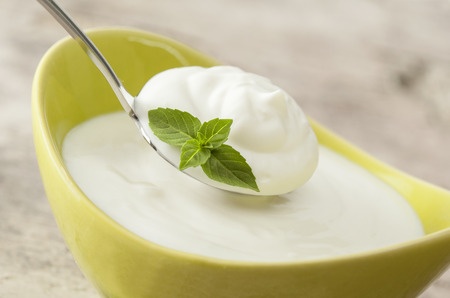
Lactic acid bacteria (LAB) constitute part of the autochthonous microbiota of many types of foods. They are especially prevalent in fermented foods. Members of the genus Lactobacillus are gram-positive bacteria, aerotolerant anaerobes or microaerophilic, rod-shaped, and non-spore-forming, with low DNA G+C content. They are also defined as a cluster of lactic-acid-producing, Gram-positive rods and cocci and catalase-negative bacteria which share many biochemical, physiological, and genetic properties (Abriouel et al., 2012).
The remainder of this post will concern the Lactobacilli.
Typical species found in foods include Lactobacillis acidophilus, Lactiplantibacillus plantarum (ex. Lactobacillus plantarum), L. paracasei, L. acidophilus, L. pentosus and L. casei. These are all probiotics. A number have undergone name changes.
In the wider family of the Lactobacilli, we also include Leuconostic.
Isolation
A number of Lactobacillus are found in dairy foods such as milk and yogurt, kefir etc. A number of vegetable fermentations include sauerkraut, pickles, brined olives, sourdough, Korean kimchi, Nigerian Ogi, and other fermented plant material, and also some cheeses, fermented sausages, and stockfish.
Fermentation of Lactic Acid bacteria.
Fresh microbial suspensions of bacteria are usually prepared by transferring 50.00 µL of lyophilized culture respectively into 5.00 mL tryptic soy broth and into de Mann, Rogosa and Sharpe broth (MRS broth).
Microbiological Analysis
Lactic acid bacteria are estimated in fermentations by plating on MRS or mMRS agar media (Oxoid) at 30ºC for 48 hours.
Antimicrobial Benefits
The lactobacillus along with the postbiotic compounds could be effective biofilm control agents. Most lactobacilli produce bacteriocins.
The cell-free supernatants of Lactobacillus fermentation are effective against the free (planktonic) and biofilm forming effects of Staphylococcus aureus (Koohestani et al., 2018).
Raising the Nutritional Content of Foods
LAB fermentation of all sorts of foods is an example of a postbiotic benefit. Fermentation of cereal grains can increase the B vitamin content. Whilst grains are rich in B vitamins generally, when they are milled or heat processed, the B vitamin content is severely reduced. Post-processing fermentation using Lactobacilli helps with raising the B vitamin content. It is especially effective with thiamine (B1), riboflavin (B2), niacin, B9, B11 and B12 (Pessione & Cirrincione, 2016).
Alcoholic Beverages
we tend to think of yeasts as the ideal microorganism for fermentation to produce alcoholic beverages, but lactobacilli are also used in fermentation.
Postbiotics such as Exopolysaccharides
One of the reasons why probiotics such as the Lactobacilli are so potent is because they produce compounds such as exopolysaccharides. Exopolysaccharides are important materials with use as postbiotics.
Lactobacillus plantarum C88 (Zhang et al., 2013) produces a neutral exopolysaccharide (EPS) named LPC-1. This is a typical candidate material for a postbiotic. LPC-1 appears to act as an antioxidant with in vitro scavenging abilities on hydroxyl and 1,1-diphenyl-2-picrylhydrazyl (DPPH) radicals. This exopolysacharide can also inhibit the formation of malondialdehyde (MDA). It also appeared to raise the activities of superoxide dismutase (SOD) and total antioxidant capacity in a dose-dependent manner.
The implication is that EPS from L. plantarum can mop up reactive oxygen species as well as up-regulate enzymatic and non-enzymatic antioxidant activities in cells and reduce lipid peroxidation.
Reduction in Toxins
Some lactic acid bacteria such as L. casei and L. plantarum are claimed to remove aflatoxins such as AFB1 or have protective effects against this compound. One potential approach is to inhibit the growth of particular moulds such as the Aspergillus species producing such compounds (Chang and Kim, 2007).
References
Abriouel, H., Benomar, N., Cobo A., Caballero N., Fuentes M. Á. F., Pérez-Pulido R., et al. (2012). Characterization of lactic acid bacteria from naturally-fermented Manzanilla Aloreña green table olives. Food Microbiol. 32 pp. 308–316. 10.1016/j.fm.2012.07.006
Chang, I., Kim, J.D. (2007) Inhibition of aflatoxin production of Aspergillus flavus by Lactobacillus casei. Mycobiology. 35: pp. 76–81
Klaenhammer, T.R., Barrangou, R., Buck, B.L., Azcarate-Peril, M.A., Altermann, E. (2005) Genomic features of lactic acid bacteria effecting bioprocessing and health. FEMS Microbiology Reviews. 29(3) pp. 393–409. (Article)
, , , & (2018). Effects of cell-free supernatant of Lactobacillus acidophilus LA5 and Lactobacillus casei 431 against planktonic form and biofilm of Staphylococcus aureus. Veterinary Research Forum, 9(4), 301–306. (Article)
Pessione, E.; Cirrincione, S. (2016) Bioactive molecules released in food by lactic acid bacteria: Encrypted peptides and biogenic amines. Front. Microbiol. 7, pp. 876–895
Zhang, L., Liu, C., Li, D., Zhao, Y., Zhang, X., Zeng, X., … & Li, S. (2013). Antioxidant activity of an exopolysaccharide isolated from Lactobacillus plantarum C88. International Journal of Biological Macromolecules, 54, pp. 270-275 (Article).
Leave a Reply